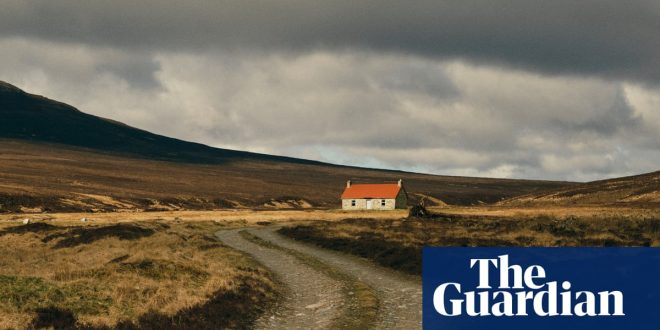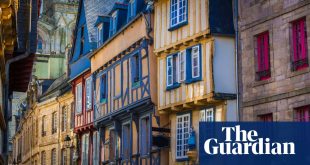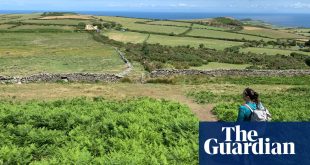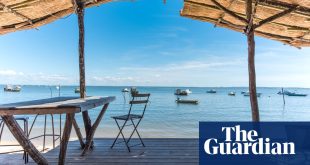Park in the Linn of Dee carpark near Braemar and you can hike to two bothies. One path takes you through winding valleys into the heart of the Cairngorms to Corrour, built originally in 1877 and reconstructed in 1949. Or you can follow the River Dee’s glittering expanse on its path down the mountains to the Red House, the Mountain Bothies Association’s most recent addition, which opened last year. The two places represent the bothy world past and present.
I discovered bothies only a few years ago but since my first stay at Cadderlie, on the shore of Loch Etive, my bothy travels have taken me across Britain: to the woods of Eryri (Snowdonia), the peaks of Wester Ross in the north-west Highlands and even Orkney’s bothy museum.
I have come to love these simple stone structures, many of which have been restored and cared for by the MBA. Its committed volunteer work parties look after about 100 bothies and keep them in good condition. In an age of glamping and boutique hotels, staying in bothies can seem an odd pursuit: who would volunteer to sleep in a building without electricity or running water?
Yet these small shelters offer connection, something that feels important in a world where we lament detachment from others and the living world.
My partner and I are in the Cairngorms for a few days in changeable weather. Cloud gives way to rain, which turns to misty snow. But for a while the sun appears and the mountains glow white against brilliant skies, their lower slopes fading to russet. We arrive at Corrour, a small bothy below the Devil’s Point that comfortably sleeps five or six but often hosts many more as hikers grab any spare scrap of floor. You can’t book a bothy, so you never know how many people will be there when you turn up.
We push open the door, thinking it might be unoccupied, only to find ourselves sharing it with five others: a pair of biologists with binoculars from Cambridge, a scientist from the US reading Tolkien, and a couple from London.
After an evening in Corrour with this happy gaggle of travellers, we hike the eight miles back to the car park and then strike out on the other path, to the Red House, about 90 minutes’ walk from Linn of Dee. Once known as Lower Glen Geldie or Ruighe Ealasaid, it became a gamekeeper’s house in 1832, during the Highland Clearances, and was occupied until the early 20th century. After it was abandoned, hikers used it unofficially, but no one maintained it. In 2016 the Mar Lodge estate invited the MBA to renovate it.
As we walk we enjoy views of the river, birdsong and budding trees. A grey wagtail hops merrily, a lapwing ruffles black iridescent feathers. A wee rainbow arcs over the peaty valley and rain-splintered sun illuminates the ruins of old settlements with evocative names such as Tonnagaoithe and Dalvorar.
Because you normally walk to a bothy, you experience the world in a particular way. The striding rhythm loosens tongues, and I have spent many happy hours walking with friends to bothies. Walking side-by-side, you notice the landscape slowly revealing itself around you.
We enter the bothy, which has yet to acquire the layered smell of fires and damp. Freshly panelled walls have a workshop’s sap-filled aroma. But socks hanging by the fire to dry signal that it won’t be long before the Red House has that traditional bothy fragrance. It’s smart, with a large communal area to the left, and a sleeping room with bunk beds for eight to the right (and will sleep many more if people are happy to take the floor). Like all MBA bothies, it has been restored by volunteers’ hard work.
We see a lone figure in the living area and do a double take. It’s Josh, the young American scientist we’d met in Corrour. He didn’t know what a bothy was three days ago but has now bagged two. That sometimes intimate, sometimes fleeting contact is one reason people return to bothies. You are thrown together with strangers in a shared refuge and often find common ground. On a trip to Guirdil on Rùm in the Inner Hebrides, I made friends with Sian, and for three days we shared whisky and conversation, only to part ways at the ferry.
I inspect some scribbles on the bothy walls, preserved behind glass. Estate ghillies graffitied messages and past hikers who have left their marks include Syd Scroggie, a Cairngorms walker who continued hiking even after losing a leg and his sight in the second world war. Care has been taken to preserve layers of human history. Bothies may be in wild places, but they are reminders that these are lived landscapes, not empty wilderness.
Whether it’s notes in visitor books, marks on walls or shared conversations around fires, people’s traces haunt bothies. Sometimes bothy book entries include poems, stories and drawings, and; presented with a blank page, many people are creative. Like the sharing of jokes with strangers, the entries speak to the bothy as a place of playful enjoyment as well as respite. This is another reason why bothies thrive: they are somewhere to laugh, to enjoy freedom, to just be. To be happy, we all need places to enjoy what philosopher Martha Nussbaum calls “capabilities”– chances to be creative, feel, connect with others and with nature. Not everyone gets that from bothies, but they are spaces that offer a different rhythm of life.
Darkness draws in, and there are the usual rituals: a gas-stove meal, a fire, bedding laid out on a wooden platform. Simple bothy life often resembles a nostalgic nod to times past, when life was less busy and noisy. Even if only for a night or two, it also presents an idea of what the “good life” might mean away from the modern world. Bothying’s merry fellowship, its busy simplicity, feels deeply satisfying.
We tidy and take out our rubbish in the morning (you always have a responsibility to the next visitors) and head back. Once in Braemar, we refuel at the Bothy cafe – where else? – spend too much in Braemar Mountain Sports, then go to Farquharson’s Bar & Kitchen for dinner. More familiar faces include the young couple from Corrour. We know first names but there’s no swapping numbers or checking social media. They will always just be John and Anna.
Debates rumble on about whether bothies are too busy and commercial now, but I was heartened to meet the next generation of bothiers, who loved the access these huts give to stunning, remote landscapes. The bothy community is thriving, although potential problems exist over access. Peanmeanach, on the Ardnish peninsula west of Fort William, closed in 2020 after complaints about overuse and damage, and arguments continue about the balance between responsibility and access to nature.
Yet the unique ecosystem of bothies lives on. Another new one is due to open next year in Argyll. Not everyone wants to stay in a bothy, but for those who do, they embody an act of care to a place and to people, to pasts and to times to come. It seems an ideal that’s more important than ever.
The trip was supported by Visit Scotland. To buy a copy of Kat Hill’s book Bothy: In Search of Simple Shelter (William Collins) for £14.95 go to guardianbookshop.com
 Top Naija News – Nigeria News, Nigerian News & Top Stories Top Naija News – Nigerian Newspapers, Nigerian News. topnaijanews is a daily Nigerian newspaper covering Latest News, Breaking News, Entertainment, Sports, Lifestyle and Politics.
Top Naija News – Nigeria News, Nigerian News & Top Stories Top Naija News – Nigerian Newspapers, Nigerian News. topnaijanews is a daily Nigerian newspaper covering Latest News, Breaking News, Entertainment, Sports, Lifestyle and Politics.




